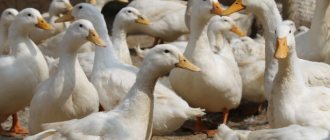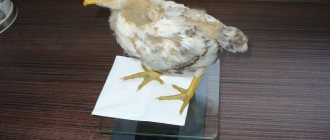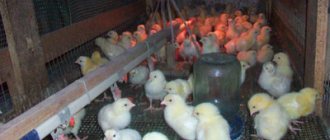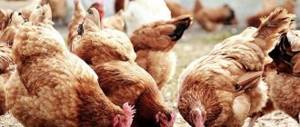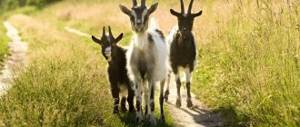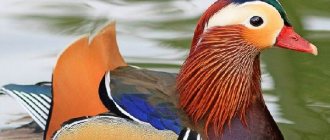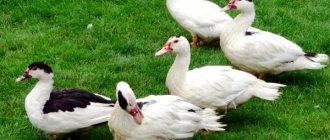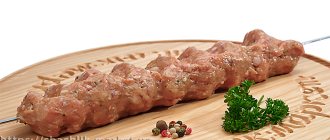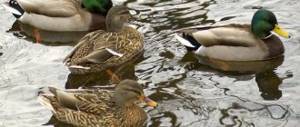1
4068
Article rating
Raising turkey ducks for meat at home is a profitable business because... Muscovy duck is a large bird and produces a large amount of meat when slaughtered.
Advantages of breedingutok-na-myaso2-90×68.jpg 90w» sizes=»(max-width: 600px) 100vw, 600px» /> Raising turkey ducks for meat
Benefits of Breeding
Despite the long period of fattening the Muscovy duck, most poultry farmers who breed this bird prefer to keep turkey ducks for meat, because this direction has a number of advantages:
- breeding brings a large amount of high quality meat;
- the bird is rapidly gaining weight, significantly outstripping other poultry in growth;
- the unpretentiousness of musk ducks makes the process of breeding turkey ducks for meat simple;
- During home breeding, along with meat products, the poultry farmer receives eggs and high-quality products, including duck liver, which is valued by gourmets.
The advantage of fattening Muscovy ducks at home for meat is their limited appetite, which makes it possible to save on the purchase of feed mixtures.
Cutting rules
To properly cut a duck at home, you need to follow some rules. The neck is removed first. Some of the meat is left in front to cover the cut. This is necessary when preparing stuffed poultry.
Next the legs are cut off. The incision is made 2 cm above the heel joint. The wings are cut off at the first joint.
The belly of the carcass is ripped open and all internal organs are removed. The goiter is removed through the cervical opening. After removing the internal organs, the meat is washed under running water. It is important to rinse quickly to avoid losing nutrients.
It is advisable to leave the tubular bones of the bird whole so that small pieces do not end up in prepared dishes. Incisions are made in the joints:
- The thighs are separated with a sharp knife;
- the wings are separated using incisions near the spine;
- to cut the fillet parts, lay the bird on its back;
- the ribs are removed using kitchen scissors;
- Before cooking, it is important to remove the sebaceous gland so as not to spoil the taste of the dish.
Content Features
Systematic regular weight gain in Indian ducks is ensured by creating comfortable living conditions:
- bedding is required, especially when kept in rooms with concrete floors;
- the optimal temperature at which a bird maintains its growth rate is at least 20-29 °C for chicks and young animals, and at least 12 °C for an adult.
When breeding for meat, the proximity of turkey ducks to other poultry is excluded, because this leads to stressful situations and causes a slowdown in growth and development. The norm for keeping meat musk ducks is 1 drake and 4 females. 1 head accounts for 1-2 m².
When breeding Indian ducks at home, many poultry farmers try to cross the Musk breed with the Pekin breed, as a result of which sterile mulards appear that grow to the largest possible size.
Especially
Feed ration
Systematic regular weight gain for Indian ducks is ensured by creating comfortable living conditions:
- bedding is required, especially when kept in rooms with concrete floors;
- the optimal temperature at which a bird maintains its growth rate is at least 20-29 °C for chicks and young animals, and at least 12 °C for an adult.
When breeding for meat, the proximity of turkey ducks to other poultry is excluded, because this leads to stressful situations and causes a slowdown in growth and development. The norm for keeping meat musk ducks is 1 drake and 4 females. 1 head accounts for 1-2 m².
When breeding Indian ducks at home, many poultry farmers try to cross the Musk breed with the Pekin breed, as a result of which sterile mulards appear that grow to the largest possible size.
Feed ration
The feed ration of an Indian duck raised for meat consists of the following:
- grain mash, where food waste is added;
- vegetable tops;
- steamed barley.
Organizing free range of poultry in warm weather reduces feeding costs and simplifies this process, because They need to feed less. The bird looks for its own food. The main share of nutrition is plant food; the food menu is supplemented by insects and worms.
If you feed turkey ducks primarily with wet food for meat, you will be able to increase the total weight of poultry by 10-15% and at the same time increase egg production.
The duck finds adequate nutrition necessary for rapid weight gain when feeding on reservoirs, therefore, if possible, it is worth locating walking areas near lakes and rivers.
In the summer season, 2/3 of the purchased combined feed is replaced by grass growing on pastures, garden beets, potatoes and other tops.
Corn gives musk ducks rapid weight gain, therefore, when fattening poultry for slaughter, it is recommended to increase the percentage of corn cobs.
During the first weeks, the chicks are fed individually. To increase the appetite of young animals, feeding is organized so that the food rolls off the baby’s back, because Muscovy ducks eat things that move faster.
Free-range turkey ducks reduce feeding costs
Time for slaughter
Each poultry farmer calculates the slaughter time individually, depending on the breed of Muscovy duck and the desired amount of meat obtained at slaughter. On average, in 2-2.5 months, an Indian duck gains about 3 kg of live weight, which for many is the starting point for starting slaughter.
With an increase in fattening time to six months, the average weight of a drake reaches 4-6 kg; if you keep a female for up to 6 months, her weight will be 3-4 kg.
The age of the bird also affects the gastronomic quality of the meat:
- Meat obtained from young animals under the age of 2.5 months is considered dietary; it costs an order of magnitude higher on the market;
- duck meat aged 4-6 months is richer and healthier;
- poultry meat older than six months is tough and has significantly fewer beneficial properties, which is due to diseases that individuals have suffered over a long period of rearing and loss of immunity.
The time for slaughtering turkey ducks also depends on what kind of meat the poultry farmer intends to obtain after growing:
- poultry slaughtered at the end of autumn produces a fattier meat product with increased calorie content and nutrients, because during the summer season she manages to accumulate subcutaneous fat layers;
- from left until early spring, individuals receive lean meat if they are fed mainly with food of plant origin.
Slaughter time
Breeding and raising indo-ducks is not a labor-intensive process. In addition, for a duck to reach maturity, several months are often enough. If you keep a duck for 2-2.5 months before slaughter, then in this way you can get up to 3 kg of the most tender and delicious meat, which meets all the requirements for the best samples. At the same time, if you increase the period of maintenance to 4-6 months, the result can be from 4, and in some cases - up to 6 kg. The drake carcass should ideally weigh much more compared to the female.
The taste, as well as some characteristics of the meat, largely depend on the period in which the decision was made to cut the duck. Thus, the meat of a duck slaughtered in late autumn is guaranteed to be fattier, since by accumulating subcutaneous fats, the bird prepares for the winter. Raising poultry until early spring will result in a leaner carcass, but this largely depends on the quality of the diet.
Most experienced breeders recommend keeping poultry for meat at home until the onset of cold weather, since until then there should be no problems with pasture. In addition, it is by this period that the bird manages to accumulate useful substances, which also saturate the meat, making it more healthy and nutritious.
The age of the bird certainly affects the quality of the meat. Thus, the slaughter of a young drake or duck is unlikely to satisfy the need for meat, since only formation occurs until 2-2.5 months. At the same time, broths from such carcasses are dietary and healthy. If the age of the bird exceeds the recommended 6 months, then its meat will not meet high culinary requirements. That is why birds that are left for the winter are mainly used for breeding offspring, and not for meat.
Indo-duck meat: characteristics and reviews
Indo-duck meat has a distinct reddish color, delicate taste and aroma. It is much more tender than the meat of ordinary ducks, has a low fat content and does not have the specific odor characteristic of waterfowl carcasses.
Buyers claim that turkey meat is superior in taste to chicken or turkey. It is juicy and soft, has a rich taste and pleasant aroma. Its calorie content is 271 kcal per 100 g of product.
The cost of a kilogram of turkey meat is 220–280 rubles.
Indo-duck meat is considered dietary: it contains little fat, is easily digestible and is particularly nutritious. The fatty acids that it contains have a beneficial effect on the functioning of the heart and the condition of blood vessels, duck fat removes carcinogens, and vitamin A maintains good vision and improves skin condition.
Read also: Breinia: growing and care at home
The high protein content makes this meat an ideal food for people who engage in sports or heavy physical labor.
Possible harm
Duck meat will not harm a healthy person. However, increased protein content negatively affects the condition of people with gout or kidney failure.
Turkey meat benefits and harms
What are the benefits of turkey meat? The meat and fat of this bird are rich in vitamins, minerals, fatty amino acids (Omega-3), and microelements.
Regular use of this product saturates all cells of the body with useful and essential substances. The fat of this poultry has a positive effect on metabolic processes, improves the condition of the skin, and removes free radicals from the body.
The benefit of turkey meat lies in its high content of vitamin A. Doctors recommend consuming this product for people suffering from nervous exhaustion and physical stress, as well as for people with reduced immunity. Duck liver is simply a storehouse of male power.
It is rich in amino acids and retinol. But it is these substances that are responsible for male potency and are powerful stimulators of the sex glands and the production of male hormones. Turkey meat is recommended for consumption by people suffering from anemia and diabetes.
Important! But overweight people need to use this product with caution, because if we talk about whether turkey meat is dietary or not, we can say with confidence that it is not.
Although this product cannot be called low-calorie, occasionally eating duck meat with a green salad can saturate the body with useful substances at the same time without accumulating additional fat.
This meat is delicious and does not cause allergic reactions. However, people suffering from kidney disease, gastrointestinal tract and gout are better off avoiding eating turkey meat.
This type of meat has a high protein content and its fibers are a little harsh. Therefore, people suffering from the above diseases may feel discomfort when digesting turkey dishes.
Breeding for meat
Indo-ducks reach slaughter weight by the 12th week of life: the weight of females at this age is 2.4–2.5 kg, males – 4.2–4.5 kg. The standard slaughter time for females is 77 days, for males - 84 days. After this period, the ducks begin to molt, so you shouldn’t wait any longer.
During the molting period, down and soft feathers are replaced by hard feathers, which spoil the appearance of the plucked carcass. Therefore, ducks need to be slaughtered before “stumps” begin to appear on the body - the beginnings of future hard feathers.
It’s easy to check for the presence of “stumps”: you need to take the duck in your hands, spread the feathers and down on the breast and run your hand against the growth of the feather.
If the body is smooth, the bird can be slaughtered. If you feel hard, rough “stumps” under your fingers, you will have to wait out the molt.
If the bird begins to molt, slaughter is postponed until the 120–130th day. During the period of feather change, the duck hardly gains weight, but accumulates subcutaneous fat. Therefore, the carcasses of ducks slaughtered after molting will be fattier.
When to cut turkey duck for meat
Indo-ducks are usually slaughtered before or after the first molt. It begins in Muscovy ducks at the age of 90–100 days. If slaughter is carried out in the midst of molting, the bird’s skin will be completely covered with stumps - feathers beginning to grow. Molting lasts about a month.
Musks do not always reach a weight suitable for slaughter at 3 months; most often they are cut at 4.5–5 months. The meat of an almost adult duck has a bright taste and a pleasant dense structure.
Young animals are not fed 12 hours before slaughter so that the crop and stomach are cleared of food and the carcass is easier to gut. They are slaughtered in two ways: the duck's head is cut off with an ax or the artery in the neck is cut, placing the bird in a special metal cone, head down. With any slaughter option, the carcass must hang for at least 30 minutes so that the blood drains as best as possible.
Slaughter at home
Fattening of meat turkeys
Indo-ducks intended for slaughter receive high-calorie food, which contributes to the rapid gain of muscle mass. The basis of their diet is grain feed (75–80%), cake and bran (3–5%), boiled potatoes and animal feed (8–10%). Their “menu” also includes feed yeast, mineral feed, fish oil and grass meal.
Feeding is carried out frequently:
- from the 1st to the 10th day – 6 times a day;
- from the 11th to the 30th day – 5 times a day;
- from the 31st day - 4 times per knock.
At the same time, you need to make sure that the birds eat enough: there should always be fresh food in their feeders.
If in the walking area there is a body of water rich in duckweed, mud and small fish, the number of feedings can be reduced to 3 and only wet, crumbly mash can be left on the “menu”. Add to the mash:
- carrot and beet tops;
- boiled potatoes;
- cabbage leaves;
- dry bread crusts;
- boiled chicken eggs;
- cereals (corn, oat, wheat);
- cottage cheese;
- fresh herbs;
- meat and bone meal;
- fish waste;
- mineral supplements (shells, chalk);
- fish fat.
If, in addition to tasty meat, you also need to get fatty liver, they resort to artificial force feeding.
Intensive forced fattening lasts 3–4 weeks.
Technology
Before slaughter, the birds are sent to a special room with a mesh floor and 24-hour lighting and are not given food for 12–16 hours. This is done so that the stomach and crop of the duck are cleansed.
After fasting, the bird is sent to a special cone for immobilization. It is hung so that the body and wings of the bird are securely held by the walls, and the head and neck stick out straight down from the hole.
Slaughter procedure:
- immobilize the bird using a cone;
- take her head and pull her down so that her neck is stretched as much as possible;
- find the carotid artery behind the lower jaw;
- cut the artery and the skin above it, pointing the knife under the jaw;
- leave the carcass to bleed for 5–10 minutes;
- remove the carcass from the cone and pluck it.
If there is no immobilization cone, you need to hang the duck upside down by its legs and lay its wings behind each other so that they do not flutter. If you are not confident that you can find the carotid artery, you can cut off the head first and then hang the bird to bleed it.
Possible diseases and vaccinations
Indo-ducks are highly resistant to diseases, but some diseases are inherent in this breed.
Be sure to read:
Blue favorite ducks: breeding at home, cultivation and characteristics of the breed
Common problems:
- Down-eaters (external parasites). These are insects 1-5 mm long. The most dangerous are their voracious larvae. They feed on the base of feathers and down, the upper layer of the epidermis and blood from open wounds. When they appear, the birds behave restlessly, go bald in places and constantly try to get rid of the parasites. To combat pathology, you need to prepare a dry bath, to which you add 1 package of purified feed sulfur and sand. Sprinkle the livestock with this mixture and leave them in the trough for dry bathing.
- Goiter catarrh. This disease develops when using low-quality food and as a result of swallowing a foreign object. The pathology can be recognized by an enlarged goiter, refusal to eat, bad breath and restless behavior. To save the bird, you need to take it by the paws, turn it upside down and massage the inflamed crop. It is recommended to change the food to soft milk and contact a veterinarian.
An enlarged goiter begins to put pressure on the respiratory tract and cause attacks of asphyxia
Plucking
If you do not have a special poultry peeler, you will have to pluck the duck by hand. This is a long and painstaking task. There are two methods of plucking poultry: dry and hot.
Dry method
This method is used if the bird is plucked immediately after slaughter and bleeding. The procedure is as follows:
- sit on a chair and place a container for feathers under your feet;
- place the carcass on your knees so that the head hangs down;
- carefully pull out the feathers from the chest and back, directing the movement of the hand against the growth of the feather;
- pluck the wings and tail, pulling out large feathers in the direction of their growth.
When plucking, act carefully and leisurely so as not to damage the delicate skin of the duck. If the skin breaks and begins to fall apart, it will be almost impossible to pluck the bird.
Hot method (scalding)
This method is used if more than 4 hours have passed since the slaughter and bleeding of the bird. The procedure is as follows:
- Pour water into a large saucepan and heat it on the stove to 80ºC;
- place the duck in the pan and wait 1–2 minutes;
- cool the carcass for 10 minutes;
- pluck the feathers from the wings and tail, then process the neck and chest, then the legs and back;
- singe the bird over a gas burner.
After a short heat treatment, the feathers are easily plucked. However, keeping the carcass in hot water shortens its shelf life: after hot plucking, the bird should be eaten within 1–2 days.
singeing
After plucking large feathers, fine fluff and hairs remain on the carcass. It is impossible to pluck them out with your fingers, so you will have to use a knife. You need to do this:
- apply the knife blade to the carcass (blunt side);
- press the hairs against the knife with your thumb;
- sharply pull the knife towards you and pull out the hairs;
- process the entire carcass in this way;
- dry it with a towel or roll it in flour (to absorb excess moisture).
There is a simpler option - searing the duck carcass over a burner. Straighten the carcass so that there are no folds on the skin, stretch the wings to the sides and bring it to the burner. When turning the carcass over the burner, make sure that the bird does not catch fire and its subcutaneous fat does not melt. After processing, the bird must be washed from soot.
Read also: Difference between the larvae of the mole cricket and the May beetle
Proper slaughter and plucking will preserve the taste of the meat and the appearance of the carcass. The finished product will be happily bought by supermarkets, restaurants or cafes.
Dry processing method
This method is considered the most common among housewives. Its use is optimal immediately after slaughtering the bird.
- The carcass is placed on your lap. It is better for the duck's head to hang down.
- A bowl is placed nearby where cleaned fluff and feathers are placed.
Dear visitors, save this article on social networks. We publish very useful articles that will help you in your business. Share! Click!
- They start plucking feathers from the chest, then move to the back. Next, pluck out the tail and wings. All movements must be as careful as possible so that the skin of the duck is not damaged. Destroyed skin spreads very quickly, and this creates inconvenience during further processing.
- To ensure that the bird is fully cooked, small hairs are also removed before cutting. It is impossible to do this with hands alone. You must use a knife. The blunt side of the knife is applied to the carcass and held with the thumb. With a sharp movement, the feathers are plucked towards themselves. Some people prefer to use singeing instead of manually processing the carcass to remove small feathers.
- You need to singe the carcass carefully so that the duck does not catch fire. It is first straightened without leaving a fold on the skin, and the wings are turned to the sides. In this position, the animal is brought to the burner. It is important not to melt all the subcutaneous fat. Because of this, the leather is damaged and the product loses its appearance. The soot that appears is not scraped off, because it will fall off on its own during rinsing.
- The meat is then dredged in flour to remove any remaining moisture.
- The bird is thoroughly washed under running water.
You can pluck meat at home in other ways.
Turkeys for meat - how long to keep at home?
Muscovy ducks are becoming more and more popular poultry every year. They grow quite quickly, and their meat has dietary qualities, because it is low-fat and very tender. During the first months, Indian ducks rapidly gain weight, which cannot but please the poultry farmer. Having bought turkey chicks for meat, how long to keep?
poultry for the greatest profit? This question is quite relevant. What can be included in the diet of adults to make their meat tasty and healthy?
We invite you to find out how long to keep turkey ducks for meat
Methods for slaughtering ducks at home
Killing a bird is not difficult; there are many ways to do this. With any slaughter method, the main condition is to release the blood from the slaughtered duck so that the bird’s meat can be later used for food or sold. Therefore, the slaughter of ducks both at large enterprises and at private farmsteads is carried out according to the same principle. The bird's throat artery is cut (either with a careful cut without separating the head, or the head is completely cut off), the carcass is turned upside down and the blood is allowed to flow out.
How long to keep turkey ducks for meat at home?
Indo-ducks are an unpretentious bird both in terms of keeping and feeding conditions. They have a calm character, are not aggressive towards other birds and can be kept together with birds of other breeds. In the first 6 months of life, drakes will gain weight up to 4 kg, and females - 3-3.5 kg. You just have to take into account that musk ducks are sensitive to dampness and drafts in the duckling house, and can also get sick and gain weight poorly if a large number of waterfowl are kept in one house at the same time.
Indian ducks have a number of advantages over other waterfowl. The main advantages of musk ducks include:
- High survival rate of chicks and adults.
- Precocity and rapid weight gain.
- Excellent adaptability to unfavorable climatic conditions.
- Good appetite and omnivorous.
Indo-ducks are leaders in terms of growth, because after 2 months the bird weighs about 2.5 kg, which is quite enough to send it to slaughter. If you leave the duck to grow, then soon it will be able to lay large eggs, weighing 65-70 grams each. During the egg-laying period, one female will lay about 100 eggs.
When raising turkey ducks for meat, every breeder should first of all worry about the health of the bird. Sick ducks gain weight poorly, do not develop properly, and the presentation of the carcass will definitely be spoiled. In order for birds to feel good, it is worth considering the following important aspects, namely:
- ducks need complete and balanced food;
- an insulated poultry house with good ventilation, but without drafts or dampness;
- a suitable place for walking.
For good development of indo-ducks in a duckling house, it is recommended to keep no more than 3 individuals per 1 sq. meter This rule is especially important to observe when raising individuals in winter. They spend more time indoors in winter than in summer. If there is not enough space, ducks may begin to get sick due to the high concentration of pathogenic bacteria and viruses in the air and litter. The poultry house itself should be promptly cleaned, litter changed, ventilated and disinfected from time to time.
Diet of turkey ducks when raised for meat
Indo-ducks are an unpretentious bird both in terms of keeping and feeding conditions.
The growth rate of turkey ducks directly depends on the conditions of detention and on the chosen diet. For ducks to grow well, the food must be:
- balanced;
- quality;
- varied;
- high-calorie;
- useful.
For rapid growth, the diet of Indian ducks should include various grated vegetables, cereal feeds, such as corn, wheat, barley, oats, and wet mash based on them. It is recommended to give fresh greens and vegetable tops in sufficient quantities and constantly. Greens contain a large amount of fiber, vitamins and microelements, which have a positive effect on the functioning of the digestive tract and immune system.
For the development of the skeletal system, feathers and the formation of eggshells, you need to give meat and bone meal, fish waste, crushed river shells, and wet mash can be slightly salted.
Video about breeding Indian ducks for meat:
Have you decided to raise musk ducks for meat? This is a profitable activity, because they grow quickly and gain weight well if you follow simple breeding rules. Raising turkey ducks for meat, how long to keep them and what to feed the birds - these are the issues that are discussed in the article and video. If you know other important aspects that need to be taken into account when breeding them, share your experience by leaving a comment on the You Farmer website.
Indian meat
Breeding musk ducks is interesting for breeders, first of all, for obtaining a good dietary meat product.
Taste qualities
Benefits and harms
Indo-duck meat is popular not only because of its excellent taste, but also due to its extreme benefits for the human body. Valuable properties are due to the unique chemical composition of the product. He contains:
- B vitamins;
- vitamins A, C, E, D, K;
- a large amount of minerals - potassium, magnesium, iron, zinc, copper, manganese, fluorine, phosphorus, sodium, molybdenum, boron;
- saturated acids Omega-3 and Omega-6.
In large quantities, the product contains protein, which is responsible for the normal formation of bone and muscle tissue, and relieves fatigue after intense physical and mental stress. In addition, meat contains virtually no cholesterol, which makes it possible for people prone to obesity, those with cardiovascular diseases, diabetes, and athletes to consume it.
Read also: Life expectancy of ducks
Despite the high benefits of poultry meat, it cannot be called unconditional. Excessive consumption of the product can harm the body and cause some illnesses.
The main contraindications to the use of the product are:
- diseases associated with excretory organs, including kidneys;
- disturbances in the functioning of the gastrointestinal tract;
- gout;
- intolerance to the product, which develops in rare cases.
It is also not recommended to consume duck meat for obese people. In most cases, harm is associated with excessive consumption of the product, so its consumption should be dosed.
A little about Indian meat
The structure and appearance of Muscovy duck meat is noticeably different from the meat of other duck varieties. It is closer in taste to goose and has little fat. The color is dark red, the fat is light yellow. Musk fat melts easily, leaving no cracklings.
Taste qualities
The meat of young ducks is tender and cooks quickly (no more than 50 minutes). Due to the small amount of fat contained under the skin and in the tail area of the bird, the duck is cooked in broth or baked in foil or a sleeve. The fried product comes out a little dry.
Gourmets claim that muzzle meat is close in taste to wild duck meat. It has the same rich taste and aroma. It goes well with sauces with wild mushrooms and sour berries. If the bird was slaughtered closer to winter, the meat will be fattier; carcasses received in early spring are considered lean.
Musk liver is almost as good in taste as goose liver and can be used as a cheaper alternative to foie gras.
The meat of adult turkey ducks is dense, but not tough. It preserves the taste and aroma inherent to the species. Cutlets, meatballs, and meatballs are made from it. Experienced housewives advise pouring boiling water over the carcass before preparing the dish to make the meat more juicy and tender.
Benefits and harms
Indo-duck meat contains a full list of vitamins and minerals, including vitamin A, E, iron, selenium, amino acids, and retinol. The product is useful for the elderly, pregnant women and those suffering from diabetes.
The low fat content allows duck breast to be included in the menu for children from the age of 1 year.
There are no serious contraindications to eating musky duck meat; it does not contain substances harmful to health. Limiting the amount of product is necessary for people with chronic diseases of the liver, kidneys and pancreas, and people suffering from atherosclerosis.
It is recommended to eat 100–150 g of duck meat per day, preferably steamed or baked. The benefits of eating turkey meat are obvious, but with moderate portions there is no harm at all.
At what month is it better to cut turkey ducks for meat?
You can get the maximum benefit from the meat of this duck if you choose the right bird carcass.
As practice shows, it is not enough to cook a product tasty, because if the Indian duck turns out to be old, you will not get a good, healthy dish. The bird belongs to the category of early ripening birds and reaches maturity already at 2.5-3 months. It is at this time that its meat acquires a pleasant taste, becomes soft and tender. At a later age, the duck begins to lay eggs, which negatively affects the quality of the meat.
Keeping Muscovy ducks and at what age are turkey ducks slaughtered for meat?
Many livestock breeders are interested in how long to keep poultry and when can a turkey duck be used for meat? The Muscovy duck has a number of advantages over other types of poultry:
- It is distinguished by high survival rates.
- Indo-ducks do not require special conditions of detention. To grow them, a small, warm, ventilated shed without open drafts will be sufficient.
- Although these birds are considered waterfowl, there is no need to build special reservoirs for them. They feel great in small open areas, and a regular trough will be enough for them to bathe.
- They are not shy, do not cackle or panic at the sight of people, making Indian ducks very comfortable to keep.
- Muscovy duck is unpretentious in food. The bird easily eats all types of food offered to it.
- Muscovy duck eggs can be eaten. Each duck lays up to 100 eggs per year, each weighing 70 grams.
- Indo-duck can be cut as early as 2.5-3 months. It is at this age that poultry meat reaches maturity and its taste improves.
Important! It is worth noting that birds can pluck each other’s feathers due to a lack of vitamins. In this case, it is necessary to diversify their diet by adding fresh grass or vitamin complexes.
What to feed turkey ducks for meat
In order for Muscovy ducks to rapidly gain weight, they need to provide an appropriate balanced diet.
Mandatory products in a duck's diet should be grains: rye, millet, oats, barley, legumes, corn. They must be given to birds at least three times a day. Special mashes are made from grains, adding a little kitchen waste, barley is steamed, and corn is boiled. Food should be pre-chopped and ground.
In the winter-spring period, each adult bird should have 30 g of barley and wheat, 20 g of oats. Cereals must first be soaked in water for 2-2.5 hours. This food is almost 80% digestible and, thanks to its high carbohydrate content, gives the duck energy for the whole day.
Vegetables, fresh herbs and plant tops must be given to the bird in sufficient quantities at all times. Among vegetables, ducks prefer zucchini, carrots, beets, and pumpkin. These products contain many useful micro- and macroelements and vitamins, which have a positive effect on the health of the bird, the functioning of its digestive system, and the rate of weight gain.
As a rule, the green mass is crushed and mixed with wet mash. Such “dishes” should make up 20% of the poultry menu. You don’t have to limit the amount of fresh cabbage, as it improves digestion and has a positive effect on the quality of feathers. Boiled beets and potatoes are allowed to be given in amounts up to 20% of the total diet, and 10-15% of carrots is enough.
Green feed
Green food is also an integral part of a balanced diet for indian ducks. It is recommended to use feed whose moisture content does not exceed 18%. They are given little by little, gradually increasing the portion.
Ducks' favorite delicacies are considered to be aquatic vegetation: duckweed, elodea, etc. It is rich in proteins, microelements, and vitamins, thanks to which it has a beneficial effect on the appearance of the bird and the taste of the meat. It is recommended to feed adults with 0.5 kg of this mixture, young animals - starting with 15 g of plants, gradually increasing the dosage.
Feeding ducks with granulated feed, which is given along with vitamin supplements, is considered completely justified. Combined feeds contain all the elements necessary for normal growth and development, so they are excellent during the period of active duck growth, weight gain, and for raising young animals.
VIDEO: COMPOUND FOOD RECIPE FOR MUSCOY DUCKS Specialized food can be purchased at pet stores.
Mineral supplements
Mineral and vitamin supplements should always be on the Muscovy duck's menu, but it is most important to provide them in winter and early spring. Through mineral feeding, you can achieve amazing results: active growth of the meat part, increased egg production, and an increase in the hatchability percentage of eggs. In order not to “guess” with the recipe for feeding, it is bought in specialized stores in ready-made form.
- crushed eggshells, chalk or shells, which are mixed with the main food;
- table salt. It is necessary to add in small doses, up to 0.2%;
- coarse sand or gravel, necessary for the digestion of grains and solid foods in the stomach. The recommended dose per week is 10 g.
Factors influencing growth
Mute birds grow quickly and do not require complex care, but the condition of the bird depends on a number of conditions:
- hatched chicks need warmth and light for intensive metabolism and development;
- it is necessary to maintain cleanliness in the room where the bird is located;
- The diet of indo-ducks is kept balanced and varied;
- high humidity and overcrowding of birds in the coop should not be allowed;
The food, in addition to green mass, should contain wet mash (cottage cheese, boiled eggs, boiled or steamed corn, salt, chalk, bone meal, yeast). The poultry house is equipped with containers with ash. Small ducklings are fed 7-8 times a day. Adult mute cats need 3 meals a day.
Birds are provided with free access to water. Indian ducks do not need bodies of water for swimming, but they do need a place to splash around.
The birds are equipped with an aviary for walking, which is fenced around the perimeter and covered with a net on top. To protect from rain and wind, a canopy is built. In the coop for resting and sleeping, they build wide floors; instead of a perch, they place a wide board.
How often to feed
The convenience of breeding musk ducks lies in the fact that they are unpretentious in nutrition and can survive on pasture for a long time. It is recommended to feed birds in small portions, up to 5-7 times a day. The food must be crushed.
In most cases, the frequency of feeding is determined by the duck itself: it can approach the feeder constantly. Therefore, it is recommended to leave some dry food in the container. Wet food should be removed after each feeding as it quickly dries out and spoils.
